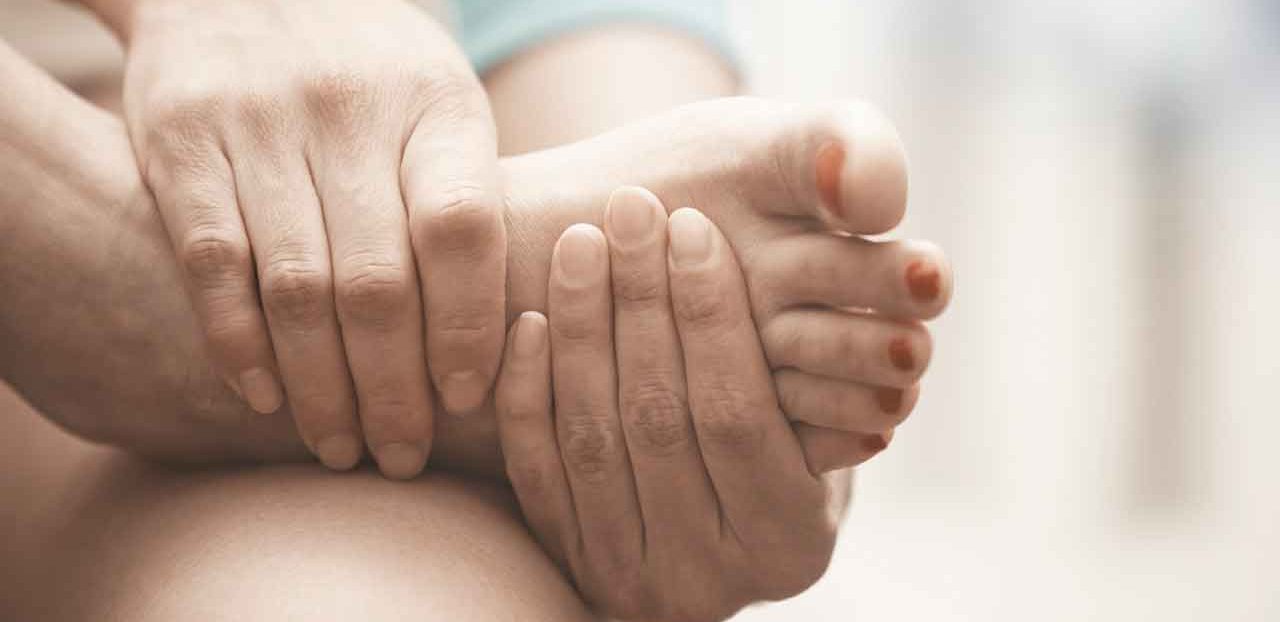Your Feet Support You, So Support Your Feet

Most people ignore foot pain even though it can lead to bigger problems.
You may not look at them closely enough to realize it, but your feet are marvels of anatomy and mechanical engineering.
They have one-quarter of all the bones in your body, 33 joints, and more than 100 tendons, muscles, and ligaments. All of those parts work together to help you take 8,000 to 10,000 steps per day. That’s 115,000 miles over a lifetime, or four times around the circumference of the Earth.
YOU MIGHT ALSO LIKE: Sound Technology Can Zap Foot Pain
Every time your heel lifts off the ground during a step, your toes carry one half of your body weight. In one day of normal walking, the total forces on your feet can be hundreds of tons, or the average weight of a loaded cement truck.
Yet, we give them so little respect. Ironman triathlete Rodney Cutler of New York City asks if you even wash them. He means really giving them a good scrub, top to bottom and between the toes, while checking for any problems
“Many people forget this basic hygienic process, which would rid them of, say, three quarters of their problems,” he says.
If you’re just sloshing them around in some soapy water at the bottom of the tub, who knows what else you might be missing?
You should also make sure you dry your feet well, moisturize and file hard skin, cut toenails carefully, shoe shop in the afternoon (when your feet are at their largest), change your socks daily to keep your feet fresh, be careful in communal areas, and don’t wear flip-flops all the time, says the UK National Health Service (NHS).
Three quarters of Americans will have foot pain at some time in their lives, and one common cause are shoes that simply don’t fit your feet or your activity.
Wear shoes appropriate for the occasion, and don’t cheat on the size. Nine out of 10 women wear shoes that are too small for them, according to foot.com. That can lead to bunions and other problems. Women also have foot problems four times more than men. High heels are partly to blame.
YOU MIGHT ALSO LIKE: High Heels Are Dangerous
If you have narrow feet, say a “B” width, buy shoes with that width. Those wide uptown kickers may look good at your local club, but you’re likely to come home with sore, chafed feet.
You should also wear shoes specific to your sport, such as running shoes for running — and better yet, those fitted to adapt to a natural tendency for your feet to pronate, or turn inward or outward. Check out the American Podiatric Medical Association website to get advice on which shoes are right for you — whatever the occasion.
Pain in your foot is your foot trying to tell you something. Rather than soldier through as though you’re in a forced march, like most people, take some time to do a self-assessment. You don’t tolerate a headache, so why would you tolerate a foot ache?
You can find help for that at the Institute for Preventive Foot Health, which has a tool that can help you identify some possible conditions. Some common conditions you might run into include heal pain, bunions, ingrown toenails, fungal infections, and calluses and corns, which some people don’t actually find irritating.
You should also know about Achilles tendonitis and plantar fasciitis, conditions that can strike anyone anytime depending on their footwear, how and where they walk, even their types of socks.
If you're over 60 or have diabetes, foot care becomes even more important. As you age your skin thins, foot joints begin to stiffen, and your feet become more vulnerable to the cold.
"Physically, it gets more difficult for us to get to our feet, and failing eyesight doesn't help,” says NHS College of Podiatry podiatrist Emma Supple. “Go to see a professional for a foot (motion test) every six months and never put up with foot pain as if it is normal. Your feet shouldn't hurt."
Yet research has found that one in five people admit to suffering with foot pain often or constantly. NHS Podiatrist Lorraine Jones says: "What this research shows is that a huge amount of people are willing to put up (with it).”
As for diabetes, the disease can cause you to lose feeling in your feet.
“When you lose feeling in your feet, you may not feel a pebble inside your sock or a blister on your foot, which can lead to cuts and sores. Diabetes also can lower the amount of blood flow in your feet. Numbness and less blood flow in the feet can lead to foot problems,” says the National Institute of Diabetes, and Digestive and Kidney Diseases (NIDDKD).
Foot care is critical if you have diabetes but particularly if you have pain, loss of feeling, changes in the shape of your feet and toes, sores, cuts, or ulcers that don’t heal. Make a routine of inspecting your feet.
“If you take care of your feet every day, you can lower your chances of losing a toe, foot, or leg. Managing your blood sugar can also help keep your feet healthy,” the NIDDKD says.
“Work with your healthcare team to make a diabetes plan that fits your lifestyle and includes foot care. The team may include your doctor, a diabetes educator, a nurse, a foot doctor (podiatrist) and other specialists who can help you manage your diabetes.”
YOU MIGHT ALSO LIKE: Diabetes Related Foot Deformity Is on the Rise
Updated:
March 25, 2020
Reviewed By:
Janet O’Dell, RN